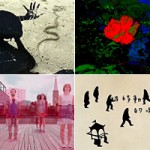UPBEAT NOTHINGNESS; Leila Jarman; TRT: 3.14
In Berlin, five people “stuck” and restricted by routine, breakout, upon finding their truest selves thru color and forms of movement.
Read more…” status=”progression_closed”]

How did this film come about? and what is it about
We were interested in studying the human form through movement and dance. The idea was to get a group of dancers together, choreograph a simple piece and film it in a very static manner, and not have the dancers know anything about the concept of the video. We went to Berlin and collaborated with friends and artists I am inspired by. They were simply given emotional references based on the nature of the choreography. The choreographer was given no information about the concept of the video aside from a few conceptual/emotional prompts. It was her job to convey those emotions through the choreography. The finished product conveys a kind of message that five people are “stuck” and restricted by a routine until they are overcome by their truest senses of self in the form of color and movement.
Why did you chose to edit these shots?
I think the answer to this is as simple as the shots we chose were the only ones that worked based on the concept for the video. Our options were limited due to the fact that most of the video is shot on a tripod, so we used that to our advantage in mirroring images and subjects.
How did you chose this music– did the dancers know about it?
The dancers did not know about the music. This was also part of the concept of the video: that everyone was slightly out of the loop. The choreographer was given a concept, the dancers were given choreography without knowing the concept, and the composer was only shown the dance. In this way, the music is a direct byproduct of the dance, and a distant ancestor to the original video concept.
What do you think of “digital filters and their contribution to the new filmmaking?
The introduction of digital tools is contributing to the development of an emergent new genre of filmmaking. For our purposes, the use of these digital tools and aesthetics were about examining human form in ways that were previously impossible with just a camera and a subject.
Upbeat Nothingness was a experiment in process, rather than a true collaboration between all of its players. The director only had control of a concept, the choreographer took this concept and gave a set of instructions to the dancers, the composer was shown the raw dance footage, and the editors worked to the score.





